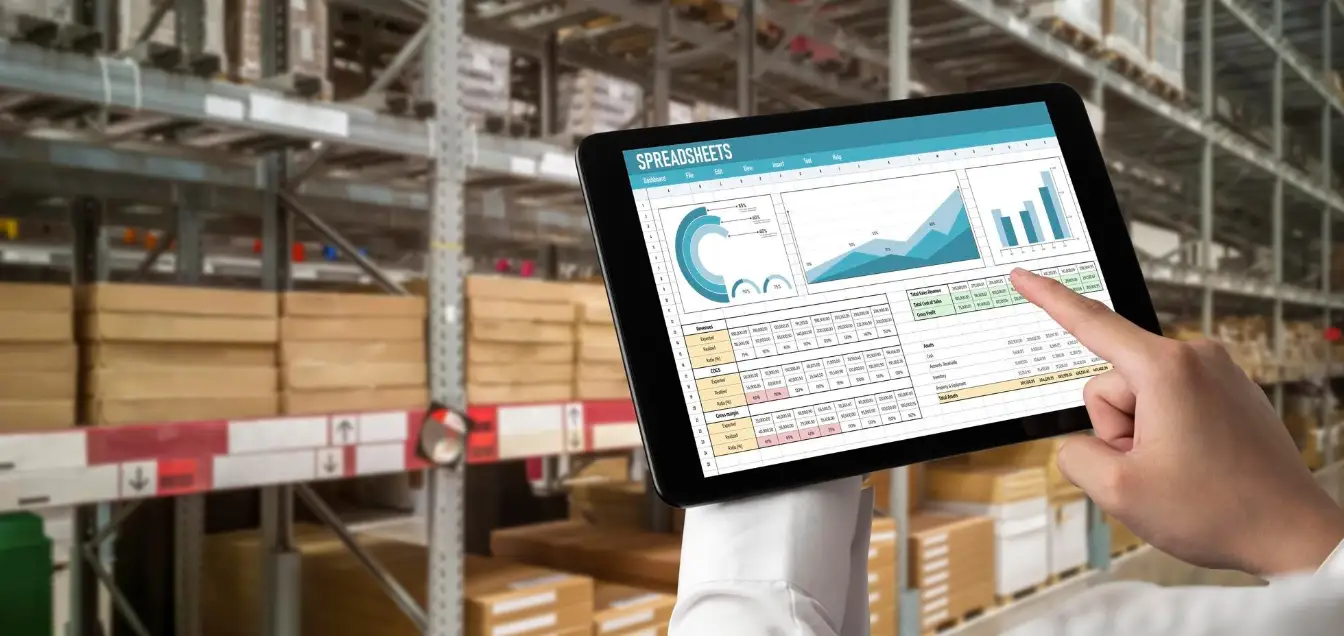In today’s fast-paced market, inventory visibility is critical for businesses looking to thrive. Organizations must efficiently manage their stock levels to meet customer demands while minimizing costs. Particularly in an evolving global supply chain, effective inventory visibility plays a crucial role. This blog explores how comprehensive warehousing can enhance Stock visibility and control, leading to improved operational efficiency and customer satisfaction.
Table of Contents
The Importance of Stock Visibility

Stock visibility is a key component of effective inventory management. It allows businesses to track their products in real-time, ensuring they can make informed decisions about restocking, fulfilling orders, and optimizing storage space. Companies that lack stock visibility often face issues such as overstocking, stockouts, and inefficient warehousing practices.
Research indicates that organizations with high stock visibility see a 20% increase in order fulfillment accuracy, which directly enhances customer satisfaction. One way to achieve this increased stock visibility is by implementing advanced inventory management tools that integrate with warehouse systems. By utilizing data analytics, companies can analyze trends and make strategic decisions.
Case Study: Increased Inventory Visibility
Consider the case of Walmart, one of the largest retailers globally. They invested heavily in technology to achieve real-time Stock visibility across all their stores and warehouses. By using RFID technology and comprehensive warehouse systems, Walmart managed to reduce its inventory holding costs by 10-15%.
This significant improvement highlights the impact that inventory visibility can have on overall business performance. With real-time access to stock levels, Walmart can avoid stockouts, effectively manage seasonal demand, and ensure that its supply chain is as efficient as possible.
How 3PL Fulfillment in Canada Enhances Inventory Visibility
Partnering with a Canada 3PL can significantly enhance your Stock visibility. Third-party logistics providers specialize in managing your warehousing and distribution needs. Here are a few benefits of working with a Canada 3PL:
- Real-time Data Access: Most 3PL providers utilize advanced technology that gives businesses instant access to their inventory data.
- Scalability: A 3PL can easily adjust to your increase or decrease in demand, ensuring that your inventory visibility remains intact.
- Expertise: Leveraging the expertise of a 3PL can minimize errors in inventory tracking and management.
For example, DelGate, a well-known 3PL provider, allows businesses to integrate their online stores with DelGate’s inventory management platform, ensuring seamless Stock visibility.
Fast and Efficient Delivery with 3PL Fulfillment
Moreover, 3PL fulfillment in Canada often provides companies with access to some of the fastest shipping in Canada. With a network of strategic locations, these logistics providers can fulfill orders swiftly without compromising on accuracy. Harnessing the capabilities of a 3PL opens up numerous opportunities for businesses looking to enhance their Stock control processes.
Fulfillment Services in Canada: A Path to Effective Inventory Management
The right fulfillment services in Canada can provide businesses with comprehensive warehousing solutions that support inventory visibility and control. A public warehouse, for instance, allows companies to store their goods alongside other businesses, which can lower costs and increase flexibility.
Public warehouses offer a unique advantage—they provide shared facilities, which can lead to much greater efficiency in managing inventory. These services are especially beneficial for seasonal businesses or those still testing the waters in the eCommerce space. Additionally, utilizing warehouses in Toronto allows businesses to take advantage of strategic locations for distribution. Moreover, leveraging 3PL warehouse services in Canada can enhance operational efficiency and improve overall resource management.
Comparison of Fulfillment Services

To understand the value of different fulfillment services, consider the following table comparing notable providers:
|
Company |
Shipping Times |
Stock control Tools |
Special Features |
|
DelGate |
Fastest shipping in Canada |
Yes |
Seamless online integration |
|
Amazon Fulfillment |
Same-day delivery available |
Yes |
Location-based shipping efficiency |
|
3PL Central |
Varies |
Yes |
Custom solutions tailored to needs |
|
Canada Cartage |
1-2 days for local shipping |
Yes |
Nationwide coverage and support |
|
Canpar Courier |
Next-day delivery available |
Yes |
Focus on regional distribution |
This table highlights how different companies leverage their strengths in Inventory awareness and management. For businesses that are ready to invest in Stock control techniques, selecting the right fulfillment partner can lead to a significant competitive edge.
The Role of Inventory Management Techniques in Visibility
To maintain optimal Inventory awareness, businesses should regularly employ various Inventory Management Techniques Techniques such as Just-In-Time (JIT) inventory, ABC analysis, and cycle counting can significantly improve the overall system.
Examples of Inventory Management Techniques
- Just-In-Time (JIT): This technique focuses on keeping inventory levels minimal and ensuring that products arrive as they are needed. By adopting JIT, companies can reduce their holding costs and maintain fresh stock.
- ABC Analysis: This technique segments inventory into categories based on value and consumption rate, allowing businesses to focus on critical stock. Class A items are high-value and require close monitoring, while Class C items can be managed with less rigor.
- Cycle Counting: Cycle counting involves frequent counts of a portion of inventory rather than relying on a full annual count. This method helps maintain up-to-date records and improves accuracy.
Companies like Zara implement ABC analysis in their supply chain, resulting in a flexible system that adapts to consumer demands while maintaining inventory visibility.
Why inventory management is important?
Why inventory management is important? Investing in effective inventory control tools is essential for achieving seamless Inventory awareness. Tools that provide forecasting, reporting, and tracking capabilities allow businesses to maintain accurate and accessible data. Some popular Stock control tools include:
- TradeGecko: Automates order management and provides real-time stock levels, which significantly enhances inventory visibility.
- Zoho Inventory: Offers an all-in-one Stock control solution for tracking stock and integrates with various eCommerce platforms.
- Odoo: An open-source platform that includes an extensive suite of business applications, including inventory management.
By implementing these tools, businesses can significantly improve their operational efficiencies and streamline their processes.
Implementing Technology for Improved Visibility

The utilization of technology not only assists in tracking inventory but also helps to forecast demand and streamline logistics. For example, predictive analytics can analyze historical sales data to predict future demand patterns, ensuring that stock levels remain optimal.
Indeed, companies that have adopted these high-tech solutions report vastly improved Stock visibility and management, with many stating they’ve increased their turnover rates by upwards of 30%.
Conclusion
In conclusion, achieving strong inventory visibility is crucial for businesses to maintain control over their stock and fulfill customer demands effectively. By leveraging comprehensive warehousing solutions, collaborating with Canada 3PL providers, and utilizing advanced Stock control techniques and tools, businesses can successfully enhance their Stock visibility and grow their operations.





